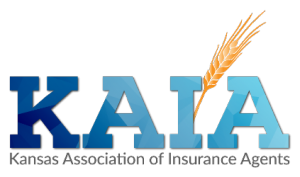Second Stimulus Package Highlights
Congress reached an agreement on Dec. 20, 2020, for a second stimulus package that will provide immediate aid to both individuals and businesses. This President’s signature occurred on Dec. 27, 2020, making it the law. The law impacts both the Families First Coronavirus Response Act (“FFCRA”) and loans established under the Paycheck Protection Program (“PPP”).
FFCRA. Under this law, the FFCRA is still set to expire on December 31, 2020. However, employers may voluntarily elect to continue to provide FFCRA leave (both paid sick and paid family leave) and receive tax credits until March 31, 2021. The leave under the FFCRA does not renew. This means that any employee who has exhausted their paid leave under the FFCRA will no longer be eligible for FFCRA leave.
PPP. The second stimulus package also impacts the PPP by allocating $284 billion for the second round of PPP loans, as well as clarifying PPP forgivable expenses and tax deductions for PPP expenses for both the original and second round of PPP loans. Most notably, the second stimulus package will provide the following:
-
- Second Round of PPP Loans. Smaller and harder-hit businesses, qualifying non-profit organizations, housing cooperatives, veterans’ organizations, tribal businesses, self-employed individuals, sole proprietors, independent contractors, and small agricultural co-operatives may be eligible for a second PPP loan with a maximum amount of $2 million if the business does not employ more than 300 employees, has used or will use the full amount of their first PPP, and can demonstrate at least a 25% reduction in gross receipts in the first, second, or third quarters of 2020 relative to the same 2019 quarter.
-
- Simplified Forgiveness Application for loans under $150,000. Under this Application, borrowers of both the original and the second round of PPP loans will receive forgiveness if they provide a lender with a one-page certification that includes a description of the number of employees the borrower was able to retain because of the covered loan, the estimated total amount of the loan spent on payroll costs, and the total loan amount. The SBA must establish this form within 24 days of the enactment of the Act.
-
- Allowable and Forgivable Expenses. The following expenses will be considered allowable and forgivable uses of PPP funds for both the original and second-round PPP loans made before, on, or after enactment of the Act, except in the event that forgiveness has already been obtained:
- payments for software, cloud computing, and other human resources and accounting needs;
- costs related to property damage due to public disturbances that occurred during 2020 that are not covered by insurance;
- expenditures to a supplier pursuant to a contract, purchase order, or order for goods in effect prior to taking out the loan that is essential to the borrower’s operations at the time at which the expenditure was made. Supplier costs of perishable goods can be made before or during the life of the loan; and
- personal protective equipment and adaptive investments to help a borrower comply with COVID-19-related federal, state, or local health and safety guidelines during the period between March 1, 2020, and the end of the national emergency declaration.
- Allowable and Forgivable Expenses. The following expenses will be considered allowable and forgivable uses of PPP funds for both the original and second-round PPP loans made before, on, or after enactment of the Act, except in the event that forgiveness has already been obtained:
-
- Tax Treatment of PPP Loans. Both original and second-round forgiven PPP loans will not be included in taxable income. Deductions are allowed for expenses paid with proceeds of a forgiven PPP loan, effective as of the date of enactment of the CARES Act and applicable to subsequent PPP loans.
-
- Clarification of Forgivable Payroll Expenses. Employer-provided group insurance benefits, such as group life, disability, vision, and dental care are included in forgivable payroll costs for both the original and the second round PPP loans.
Submitted by Kristina Dietrick, PHR, SHRM-CP, President and Owner of HR Partners. The original post can be found here.
